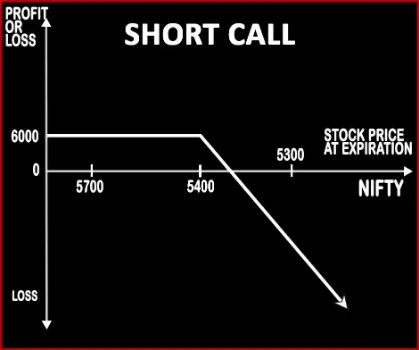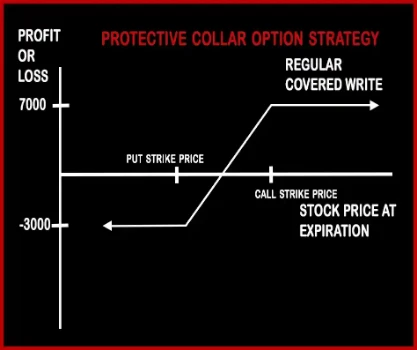Compare Strategies
| SHORT CALL | PROTECTIVE COLLAR | |
|---|---|---|

|

|
|
| About Strategy |
Short Call Option StrategyA trader shorts or writes a Call Option when he feels that underlying stock price is likely to go down. Selling Call Option is a strategy preferred for experienced traders. However this strategy is very risky in nature. If the stock rallies on the upside, your risk becomes potentially unquantifiable and unlimited. If the strategy |
Protective Collar Strategy This Strategy is implemented when the investor requires downside protection for the short - to medium term but at lower cost. Buying protective puts can be an expensive proposition and writing OTM calls can defray the cost of the puts quite substantially. Protective Collar is considered as bearish to neutral strategy. In this strategy risk and reward is both are limited. This .. |
SHORT CALL Vs PROTECTIVE COLLAR - Details
| SHORT CALL | PROTECTIVE COLLAR | |
|---|---|---|
| Market View | Bearish | Neutral |
| Type (CE/PE) | CE (Call Option) | CE (Call Option) + PE (Put Option) |
| Number Of Positions | 1 | 2 |
| Strategy Level | Advance | Beginners |
| Reward Profile | Limited | Limited |
| Risk Profile | Unlimited | Limited |
| Breakeven Point | Strike Price of Short Call + Premium Received | Purchase Price of Underlying + Net Premium Paid |
SHORT CALL Vs PROTECTIVE COLLAR - When & How to use ?
| SHORT CALL | PROTECTIVE COLLAR | |
|---|---|---|
| Market View | Bearish | Neutral |
| When to use? | It is an aggressive strategy and involves huge risks. It should be used only in case where trader is certain about the bearish market view on the underlying. | This Strategy is implemented when the investor requires downside protection for the short - to medium term but at lower cost. |
| Action | Sell or Write Call Option | • Short 1 Call Option, • Long 1 Put Option |
| Breakeven Point | Strike Price of Short Call + Premium Received | Purchase Price of Underlying + Net Premium Paid |
SHORT CALL Vs PROTECTIVE COLLAR - Risk & Reward
| SHORT CALL | PROTECTIVE COLLAR | |
|---|---|---|
| Maximum Profit Scenario | Max Profit = Premium Received | • Call strike - stock purchase price - net premium paid + net credit received |
| Maximum Loss Scenario | Loss Occurs When Price of Underlying > Strike Price of Short Call + Premium Received | • Stock purchase price - put strike - net premium paid - put strike + net credit received |
| Risk | Unlimited | Limited |
| Reward | Limited | Limited |
SHORT CALL Vs PROTECTIVE COLLAR - Strategy Pros & Cons
| SHORT CALL | PROTECTIVE COLLAR | |
|---|---|---|
| Similar Strategies | Covered Put, Covered Calls | Bull Put Spread, Bull Call Spread |
| Disadvantage | • Unlimited risk to the upside underlying stocks. • Potential loss more than the premium collected. | • Potential profit is lower or limited. |
| Advantages | • With the help of this strategy, traders can book profit from falling prices in the underlying asset. • Less investment, more profit. • Traders can book profit when underlying stock price fall, move sideways or rise by a small amount. | The Risk is limited. |